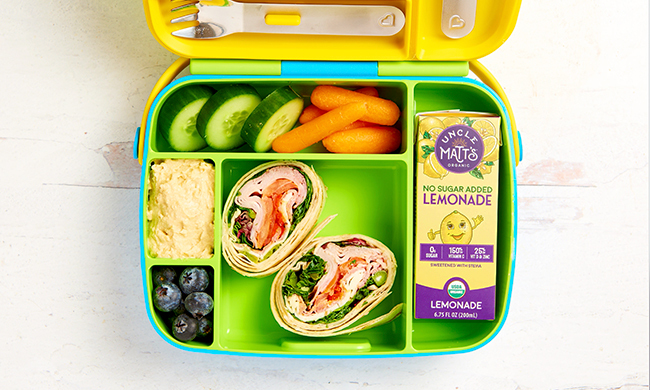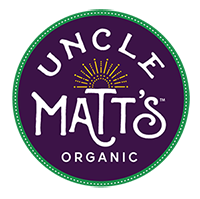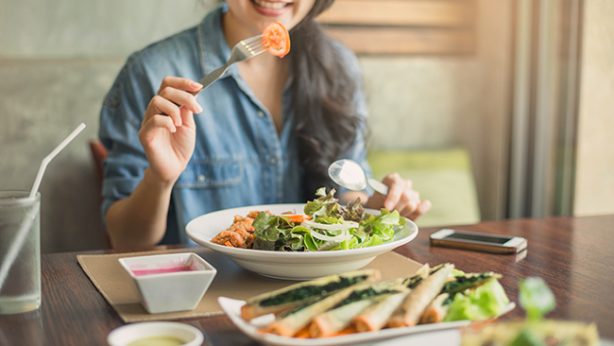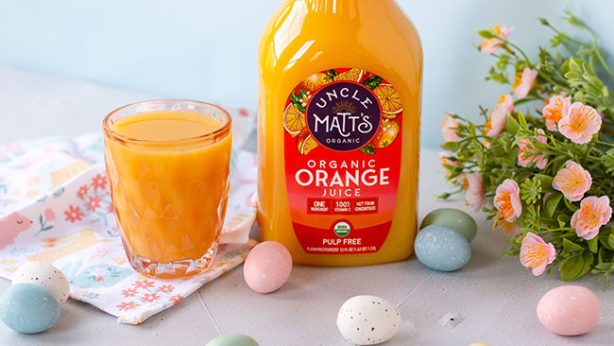Green up your school year with these planet friendly tips

The back-to-school season is approaching! As your kiddos are heading back into the classroom, we’ve got the ABCs of organic hacks to help you be more sustainable and organic this fall.
1. Inventory what you have. Tip number one may seem obvious, but often isn’t. Take stock of your supplies from the previous school year before buying more. Do you have packs of pencils lying around or notebooks that haven’t been utilized? What about rulers, scissors and lunchboxes? Are they still in good shape? Reduce the urge to go out and buy more stuff when what you have will work. What’s more, we recommend making a list of what you actually need before you go supply shopping and stick to it to avoid impulse purchases.
Have your kids’ styles changed, or have they grown out of needing a fresh full pack of crayons and colored pencils? Check with local elementary schools and after school programs to see if you can donate gently used bookbags, lunch boxes and unopened supplies to students who need them.
2. Pack a lunch. Did you know? The average elementary school disposes of 20,000 pounds of lunch waste a year. Yikes! That’s a lot of waste and 10 tons of trash per school. By packing your child’s own reusable lunchbox with healthy, organic options (together with a reusable water bottle!), you’re reducing the amount of plastic bags, paper waste and more. Whole food lunches don’t have to be time consuming or difficult. Get your kiddos involved when selecting food choices for their meals, and they’ll be less likely to balk about what’s packed.
Pro Tip: Kid-sized reusable bento boxes are a great way to make lunchtime fun. Plus, they’re cute too! Let your kids help with packing and filling each individual compartment with a healthy option. Soon they’ll be looking forward to their personalized midday meal each day!
3. Shop with your kids. To piggyback on our #2 tip, take your kids to the farmer’s market or your local store that carries organic food. If your kids are picking their favorite whole, organic foods, they’ll be excited for the meals, snacks and treats ahead.
We know… shopping with kids can be dangerous for your wallet (trust us, we’ve been there!). By focusing more on the fresh produce sections and less on the middle aisles of the grocery store, this can be a truly fruitful trip for everyone involved.
4. Backpacks can still be cool and PVC and PFAS free. PVC, or polyvinyl chloride, is a major source of phthalates. These chemicals interfere with children’s health and development by impacting their hormone function. PVC also contains chemical additives including lead, cadmium, or organotins, which can be toxic. What’s the solution? Avoid backpacks that contain shiny plastic designs, and look for the number “3” or the letters “V” or “PVC” on the backpack to identify what not to buy. Some backpack brands you might want to check out: Bixbee Backpacks, Terra Thread and Garnet Hill.
5. Say goodbye to toxic hand sanitizers. While most classrooms contain bottles of sanitizer to reduce the spread of germs and viruses like COVID-19, many products can contain chemicals like triclosan, phthalates and parabens that may disrupt thyroid function, endocrine function and hormone development. What’s more, the overuse of hand sanitizers contributes to bacterial resistance. So what’s the answer to germy, messy hands? Choose a natural sanitizer like this one from Babyganics or, old-fashioned soap and water to the tune of the “happy birthday” song works well, too.
6. Use non-toxic sunscreen. Even when kids are only outdoors for recess or lunch, the sun can be damaging to their skin. Using sunscreen will help protect them. Check out the EWG’s Best Scoring Sunscreen Lotions for Kids if you aren’t sure which sunscreen to use.
7. Buy a reusable water bottle. We can’t stress this enough: Stop buying plastic water bottles. Stainless steel is always a good option. Moreover, some schools have water filling stations where kids can refill their water bottle throughout the day to help keep them hydrated. Some of these water fountains even keep count of how many plastic water bottles are being saved every time they fill up. This is a great way to keep kids engaged and see the impacts of what happens when many students bring their own bottle.
It is important for parents to take steps to help their kids be more eco-friendly and organic, it is equally important for your kids to develop their own healthy, sustainable habits. Start by setting a good example, then let your kids know why you are doing what you’re doing. Teach your kids the importance of eating organic, making green choices and doing what’s right for the environment. Soon they’ll be following in your footsteps, and together we’ll be lowering our carbon footprint.
Editor’s Note: This post was originally published in August 2021 and has been updated for freshness, accuracy and comprehensiveness.


